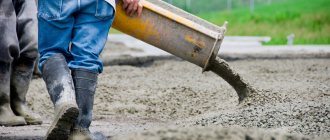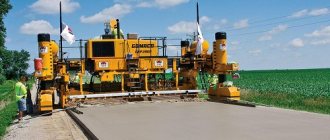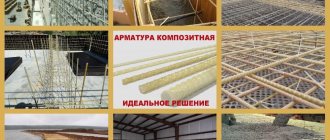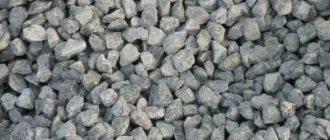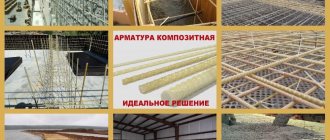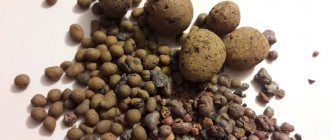Beton-House.com
Website about concrete: construction, characteristics, design. We combine the experience of professionals and private craftsmen in one place
Products in different variations
Construction technologies are rapidly developing, making it possible to improve long-existing materials, giving them new qualities, increasing their performance characteristics and decorative properties. One of these is polymer concrete, created on the basis of a traditional mixture with the addition of special fillers.
Products made from polymer concrete are characterized by high strength, long service life and high decorative properties, due to which they have found application in many areas related to construction, finishing and decoration of facades and landscapes. That's what we'll talk about.
- Preparing the Components
- Kitchen countertop
How to make polymer concrete
Forms
The cooking instructions consist of several steps:
- Preparation of components;
- Making a solution;
- Molding.
Each of these stages should be considered separately.
The video in this article will tell you how to properly make polymer concrete.
Preparing the Components
The photo shows the types of fractional fillers
To speed up the preparation process and obtain a durable and homogeneous material, it is necessary to adhere to separate mixing of resins and filler.
First you need to prepare the main components:
- Crushed stone or gravel must be washed to remove dirt and foreign matter;
- Quartz sand must be washed and sifted;
- The fractional filler must be dried so that its moisture content corresponds to 1% - otherwise, the strength characteristics of the finished solution will be reduced.
Preparation of the solution
Fiberglass mold
The solution is prepared by following the following sequence of actions:
- It is necessary to sequentially load all the components into the container, starting with crushed stone, then sand - and finally fractional filler;
- The mixture must be stirred dry for 2 minutes, then add water and mix again;
Preparation
- The binder must be prepared separately, softening it to the required consistency. To do this, you can heat it or do it with a solvent;
- It is necessary to introduce additional additives into the resin in the form of a plasticizer and stabilizer, and mix them without adding filler;
Pouring the composition into a mold when making a sink
- The resulting composition is added to the filler and stirred for 2 minutes;
- Add the hardener and stir for about 3 minutes.
Important! It is necessary to prepare the composition immediately before pouring it and in the required quantity, since it sets quickly.
Pouring into the mold
Preparing the form
Before pouring into molds, make sure that their inner surface is clean.
Forming occurs as follows:
- The inner surface of the mold must first be lubricated with paraffin, technical petroleum jelly or machine oil so that the dried product does not stick to the mold and can be easily removed;
- The entire area of the mold must be filled with solution and leveled. The formation of voids is unacceptable;
- To compact the mixture, use a vibrating table or mounted vibrator. Compact the solution until liquid forms on its surface;
Ready product
Important! If the solution is poured into the mold in portions, then compaction must be done each time.
- The mold is left for 24 hours, then the finished product is removed.
Stripping
Important! The container must be thoroughly washed immediately before the mixture begins to set.
Creation technology
What will you need?
To create this type of product we need:
- Coarse fraction filler (crushed stone, crushed large glass, sand).
- Filler of a smaller fraction of fine grinding, which will reduce the cost. It can be andesite, graphite or quartz powder.
- Binder - only 5% of the total volume. Typically these are polymer resins, for example, epoxy, urea-formaldehyde, polyester (unsaturated), furan.
- Plasticizer, hardener, dye, modifying additives.
- Release agent for molds and separation, as well as gelcoat for coating the outside.
Creation methods
The production process can be carried out using continuous or batch technology.
- Typically, continuous technology is used only in large-scale production. At the same time, dispensers, injection molding machines and automatic mixers are used to coordinate production and organize a single chain.
- During periodic production, after each completed cycle, the containers in use should be constantly washed. But there are also advantages - you can make polymer concrete even in a concrete mixer or bucket.
Where is polymer concrete used?
This material is used to make:
- Sexes;
Floor
- Stairs;
Ladder
- Paving and facing slabs;
Tile
- Monuments;
Monument
- Fontanov;
Fountain
- Sculptures;
Garden sculptures
- Drainage trays;
Drainage tray
- Window sill boards;
Windowsill
- Fencing;
Balustrade
- Balusters and handrails;
Balusters, railings and support columns
- Decorative products in the form of stucco;
Stucco molding
- Kaminov;
Fireplace
- Sinks for kitchens and bathrooms;
Kitchen sink
- Kitchen and other countertops;
Dining table with top
- Vazonov;
Garden flowerpots
- Garden furniture and urban landscape elements.
Bench
Specialized equipment can be made from polymer concrete, for example, it can be a frame.
Machine bed
The machine will not be inferior in strength and reliability to equipment made from other materials.
Fraser
Some products should be examined in more detail to evaluate their performance.
Kitchen countertop
Worktop with sink
Concrete countertops are especially popular, and polymer concrete occupies a leading position in this area. A tabletop made from this material is practical, reliable and durable.
Thanks to the high decorative qualities of the material, such a countertop will be appropriate in any interior, and the wide range of colors of the material will allow you to choose the desired shade to combine with finishing materials and kitchen facades.
Simple surface care will ensure its well-groomed and tidy appearance. The tabletop is highly resistant to moisture and mechanical stress, which is superior to the natural material whose surface it imitates.
In addition to the kitchen, polymer concrete can be used in other rooms with high humidity, for example, a sink or bathtub can be made.
Polymer concrete floor
Floor
Floor coverings are easy to install and easy to clean. They do not accumulate dust on their surface. Such flooring can withstand heavy loads, so they are often used for flooring in public spaces with significant traffic, in warehouses, parking lots and industrial premises.
At the same time, the price of installing such a floor is very affordable. A 2 mm coating can last up to 10 years, and the thicker it is, the longer its service life.
Elements of facade decor
Facade decor
If we compare natural stone and polymer concrete when creating facade decor, then the advantage is on the side of artificial stone, due to its low weight and external similarity to natural marble or granite.
The advantages of such products include the following:
- The products do not place a significant load on the walls and foundation of the building, and therefore do not require reinforcement of load-bearing structures;
- The material is resistant to environmental influences;
- They have a decorative appearance with a pronounced texture and a wide color spectrum;
- The products are durable and easy to install.
Application in the field of funeral services
Marbled monument
Monuments and fences made of marble and granite are high in cost and labor intensive to manufacture.
Tombstone
Making monuments from polymer concrete is much easier than from natural stones. The material, due to its plasticity, allows the production of ritual products of any shape and complexity. Monuments are durable and will not lose their decorative qualities for many years.
A clear pattern and relief is achieved thanks to the smooth, glossy surface of the material. In addition to monuments, ritual vases and fences can be made. The video in this article will tell you how to make products correctly.
Construction
In construction, polymer concrete is used in the manufacture of various structures (both load-bearing and non-load-bearing), as well as monolithic products. This could be, for example, wall panels, finishing slabs. Reinforcement with metal or fiberglass reinforcement is often used. It makes it possible to obtain elements of mine fasteners, sleepers, and collector rings.
Note that the characteristics of the finished material depend on the selection of components from which it is produced. More precisely, from the filler and resin. And for products used in construction, strength, chemical resistance, low abrasion and other parameters are especially important. At the same time, they should look quite attractive.
- For example, furan resin, painted in a dark color, does not allow you to obtain products in bright colors.
- Basalt added as a filler also reduces the decorative effect.
- To create cast onyx, sand aggregate is preferred.
- For the production of cast granite - transparent resin for polymer concrete and filler of the appropriate tone.
It is worth keeping in mind that if products need strength during compression or deformation, then a larger amount of filler is added. As the resin content increases, the flexural and tensile strength increases, as well as a parameter such as impact strength.
And one more thing: the best raw materials are still produced by foreign companies. This applies to both resins and fillers. By price: a kilogram of American Gruber brand aggregate will cost from 2 to 15 dollars. “Marble” resin from the well-known company Ashland Finland OY will cost from 2.35 to 2.7 dollars per kilogram.
Modern options for making decorations for the facade
Decorative elements of the facade, used for the original design of buildings, appeared in ancient times. They have also found application in modern architecture, which is increasingly turning to classical canons, although in order to comply with modern building codes they had to adapt. This primarily affected the material used to make façade decor: traditional gypsum, which is too heavy and deteriorates under the influence of precipitation and temperature, has given way to more functional options. Modern decorative facade elements are made from natural and artificial stone, fiberglass, as well as concrete and its derivatives. Another practical solution for facade decoration is the combination of expanded polystyrene and polymer concrete, from which RussMold brand products are made.
Advantages and disadvantages
The material has many advantages that increase its popularity and expand its scope of use:
- Strength. Polymer concrete is characterized by high reliability; products made from it are quite difficult to damage.
- Resistance to adverse factors. The material easily tolerates temperature changes, high and low temperatures, and the influence of aggressive chemicals. It can be used in different conditions without additional impregnation, priming, or processing.
- Waterproof. Polymer cement literally repels water, which quickly evaporates from its surface. This reduces the risk of cracks and destruction of the monolith.
- Easy to restore. Even if chips and other mechanical damage occur, you can quickly repair polymer concrete products and adjust their shape using restoration mixtures.
- Smooth but not slippery surface. There are no roughnesses or grooves on the artificial polymer concrete stone, but it is quite even, smooth, and can be easily cleaned of all types of contaminants.
- Variety of assortment. The material can have a completely different appearance - it imitates malachite, marble, granite, and has different shades. This allows you to select the right type of polymer concrete for any interior, facade or exterior work.
- Recycling. The remaining polymer concrete is suitable for the next production cycle, which reduces the burden on the environment. Also, its composition may not include pure resins, but products of their processing.
Polymer cement also has disadvantages. It is a highly flammable material due to the presence of chemical components in its composition. In this regard, its use in conditions of increased fire hazard and heating is unacceptable.
Important! The price of the material is an order of magnitude higher than the cost of classic concrete solutions.
Price
The price tag per m³ of polymer concrete in Russia is from 2000 rubles and above.
It is economically profitable to produce cast concrete using recycled materials. Let's try to confirm with numbers.
Styrene resin is sold from 290 rubles/kg. Waste polystyrene (this is the raw material for producing pyrolysis resin) costs from 40 rubles/kg. The resin yield with proper organization of the process reaches 80%. The remaining mineral components, except pigments and hardener, cost up to 20 rubles/kg.
it is impossible to obtain white products using recycled resin .
The pyrolysis process itself can be organized even without the use of combustion fuel; the reactor is heated by pyrolysis gases released during the reaction.
Reinforcing polymer fiber for concrete is produced by extrusion from polypropylene or polyethylene. Recycled plastic may be used. The price of primary polypropylene now reaches 100 rubles/kg, secondary – 45 rubles/kg.
If you carry out full-cycle processing using plastic waste, you can reduce the price of polymer concrete to 15-20 rubles/kg of raw materials.
Let's sum it up
Summarizing the above material, it can be noted that both decors are created from modern materials that have many positive criteria that are well suited for design ideas of any level.
Polymer concrete is more wear-resistant to chemical influences and absorbs moisture less, while arch-marble, having the texture and ability to give the required shape, is more durable and lighter not only than polymer concrete, but also other decorative materials.
up to you to decide whether some of them are worth overpaying for decor by more than 2 times .
Specifications
Depending on the specific type and components included, polymer concrete may have different technical parameters and properties. Thus, its density can vary from 300 to 3000 kg/m³, specific gravity - from 500 to 4000 kg/m³, abrasion index - from 0.02 to 0.03 g/cm³.
Composition and structure
The main substance that determines the properties of the material and connects all its components together is resin - furfural acetone, epoxy, unsaturated polyester, urea-formaldehyde, furano-epoxy, methacrylic acid ester.
Other components of polymer concrete:
- coarse filler – crushed rock with particles up to 4 cm in size;
- quartz sand with a grain size of up to 0.5 cm, pre-cleaned and dried, without clay impurities;
- ground filler fraction up to 0.15 mm - quartz flour, graphite powder, andesite (needed to reduce the amount of expensive binder);
- gypsum - used if polymer concrete is made on the basis of urea-formaldehyde resin;
- additives to improve technical characteristics and decorative properties - surfactants, antiseptics, pigments, fire retardants, modifiers.
A polymer additive to polymer concrete can be plastic of the polyolefin group - polyethylene, polypropylene. Its fibers are flexible and resistant to sub-zero temperatures, so work with the finished material can be carried out even in cold weather.
GOST
The production of polymer concrete at all stages is regulated by a whole list of GOSTs and other regulatory documents:
- GOST 25192-2012 “Concrete. Classification and general technical requirements";
- GOST 7473-2010 “Concrete mixtures. Technical conditions";
- GOST 25881-83 “Chemical resistant concrete”;
- GOST 27006-86 “Concrete. Rules for selecting the composition";
- GOST 24211-2008 “Additives for concrete and mortars”;
- SN 525-80 “Instructions for the technology of preparing polymer concrete and products made from them.”
There are separate GOSTs and TUs that prescribe standards for the production and use of resins for polymer concrete - GOST 14231-78, TU 6-05-1618-73, GOST 16505-70, TU-59-02-039.13-78.





